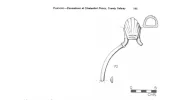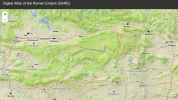Paladina
old woman of the roads
- Time of past OR future Camino
- CF, primitivo & del norte (2017); VdlP/Sanabres, ingles etc (2018), Mozarabe etc (2019), tbc (2020)
Wandering around the Keepers of the Gael exhibition in Galway City Museum - a welcome refuge from the annual Christmas shopping spree - I spotted an unusual object on display: part of a cast bronze riding stirrup bearing an ornamental plate in the form of a well-worn scallop shell. Form has given way to function, with its elongated shaped bearing a curious resemblance to a bishop’s mitre. The item was discovered at Clontuskert Abbey, and the curator, who has dated it to the thirteenth or fourteenth century, surmises that its owner may have returned from a pilgrimage to Santiago. Although I’ve come across innumerable commemorative coins, medals, plaques, pins and badges, this is the first material evidence I’ve seen of a pilgrimage on horseback. Has anyone else come across something similar?





















